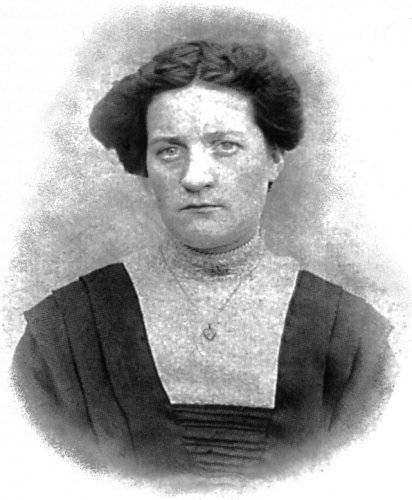May Howard
Vol. 4, No. 16
Although Lillian Bentham remains one of the more detailed accounts from a local survivor of the Titanic sinking, Orleans County has several other connections to the tragic disaster. On May 2, 1885, a baby girl was born to William and Martha Howard at North Walsham in Norfolk, England. May Elizabeth Howard was one of eight children born to the English couple, the father working as an agricultural laborer.
At the time the Titanic was set to sail on her maiden voyage, the 27-year-old Howard planned on visiting her brother in Toronto before traveling to Albion to stay with her sister, Jane Hewitt. Her intention was to move in with the family of County Sheriff William Kenyon to work as a nanny. May secured a ticket on a smaller vessel that was set to sail in the days leading up to the Titanic voyage, but a coal strike forced her to travel aboard the unsinkable ship. She shared a room with Emily Goldsmith and her son Frank for the duration of the journey.
As May recalled her experiences on that frightful evening, she had not yet retired for the night when the ship collided with the iceberg. The ringing of bells coming from below deck piqued her curiosity and she ventured out to investigate along with countless other third-class passengers who wandered the corridors. Crewmembers explained that there was no cause for concern and encouraged the passengers to return to their room. Shortly afterward, a “doctor” came to May’s room and encouraged her to secure her lifebelt but reassured her that everything was okay.
After panic set in, any effort to venture on deck was met with frustration as throngs of passengers rushed the stairwells. On her first attempt to reach the upper deck she tumbled down the stairs because of the impatient passengers but eventually emerged topside where crowds of strangers wandering about greeted her. Officers quickly grabbed her and shoved her to the side of the boat where crewmembers loaded the lifeboats with women and children. After the Goldsmiths and May were loaded into the tiny vessel, crewmembers launched the boat into the water.
She later recalled that there was room for at least 15 more passengers, but many believed that the on-deck rush to launch the lifeboats was simply a precaution; that passengers would return to the ship in a matter of a few hours after repairs. Emily’s husband remained on deck to make room for other women and children and was never heard from again. J. Bruce Ismay, the director of the White Star Line, was allegedly in May’s lifeboat, an action that he was heavily criticized for in the years following the catastrophe. In the final moments of the sinking, May recalled watching the ship point upwards into the sky before submerging below the frigid water without a ripple; the ocean was unbelievably calm.
Another survivor, a man destined for Albion, had a harrowing escape from death while floating in the freezing water. Joseph Duquemin was born November 24, 1887 on the Isle of Guernsey. The young man purchased a third-class ticket for 7 pounds and 11 shillings and boarded the ship with two friends, Howard Hugh Williams and Albert Denbuoy. In the story of Lillian Bentham, Albert Denbuoy is mentioned as a possible member of the 11-person party that traveled to Guernsey and it is very likely that Duquemin and Bentham were acquainted.
In the panic that ensued on deck, various accounts claim that Duquemin was on deck assisting women and children into boats, even taking off his overcoat and wrapping it around a shivering seven-year-old girl named Eva Hart. He remained on the ship, waist-deep in water, when he finally turned to Williams to tell him that he was jumping overboard. As he swam towards a nearby lifeboat, Williams was pulled under from the suction and never seen again. As Duquemin neared collapsible lifeboat D he was denied entry by the passengers who feared that he might capsize the vessel. He eventually convinced the occupants that he could handle an oar and was permitted to enter the boat. In the years following the sinking, Duquemin would suffer terrible from complications associated with the frigid water and eventually had his legs amputated.
One other man destined for Albion was not as fortunate as Joseph Duquemin. William Alexander, a native of Norfolk, England was traveling to Albion to live with his sister, Gertrude Jex, and his brothers Albert and Reginald Alexander. Although little is known about Alexander and his experiences on the voyage, his ticket was paid for by his siblings although he did not survive the sinking. Gertrude Jex lived at 23 Hamilton Street in Albion for several years before relocating to Lockport, NY. Unfortunately, the family’s suffering did not end with William’s tragic passing as two younger siblings died while fighting in France with the British Army.

